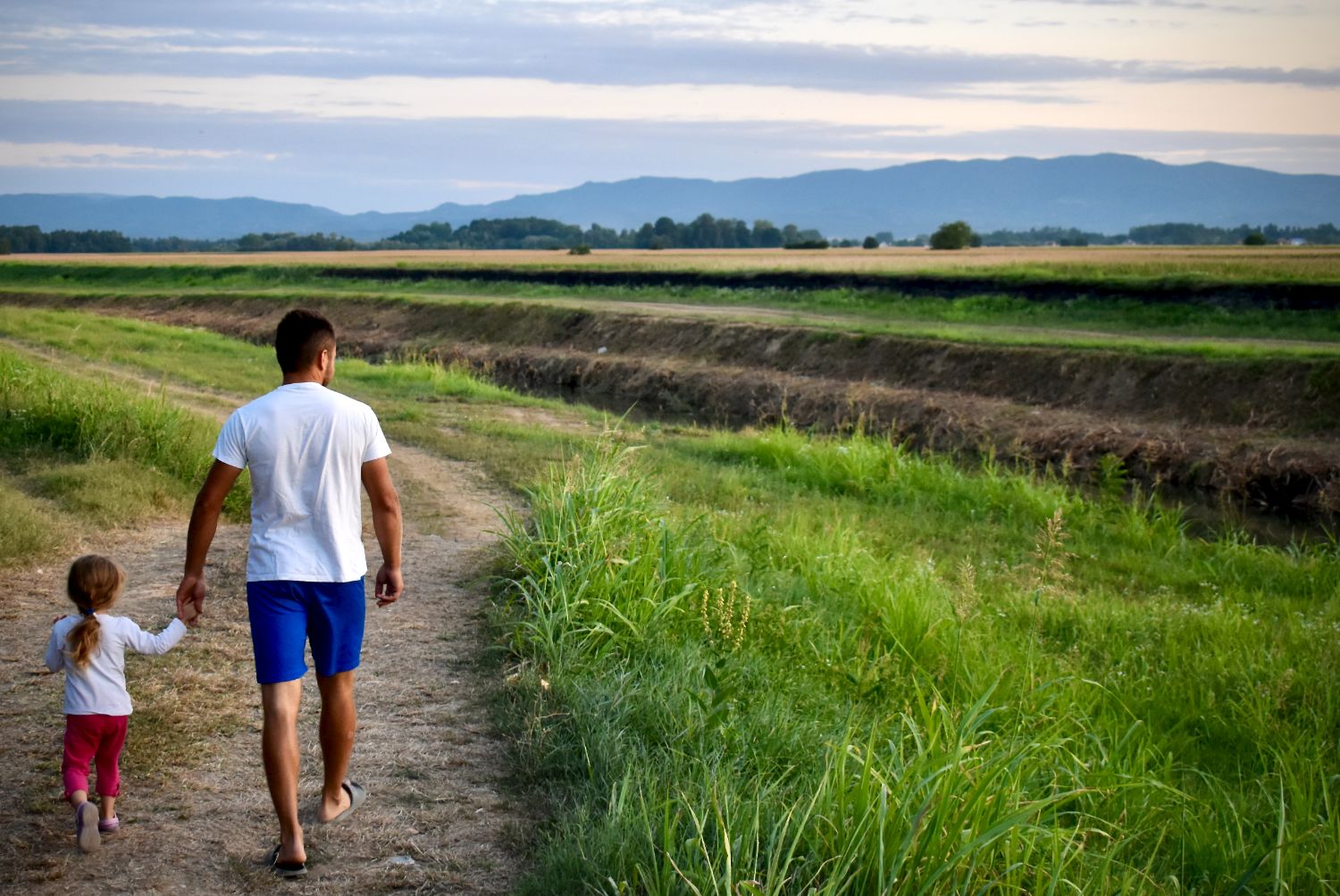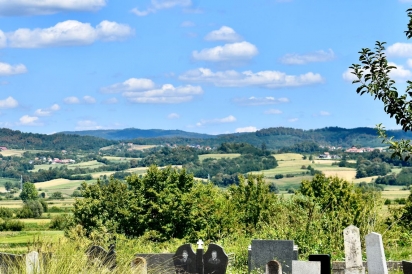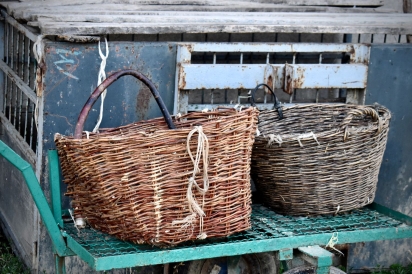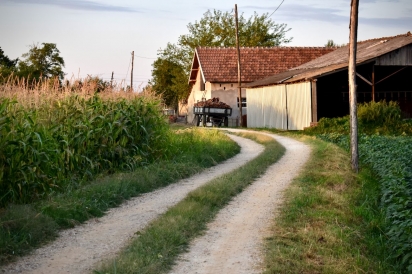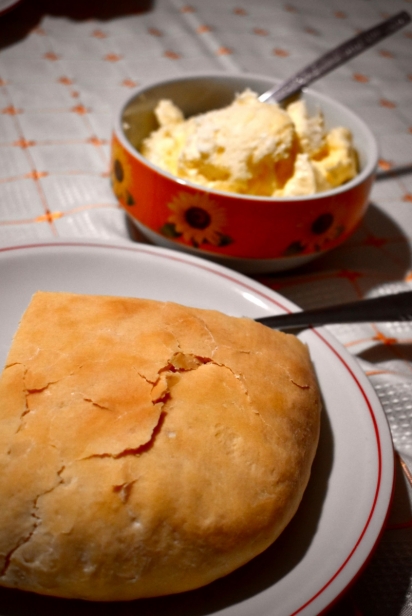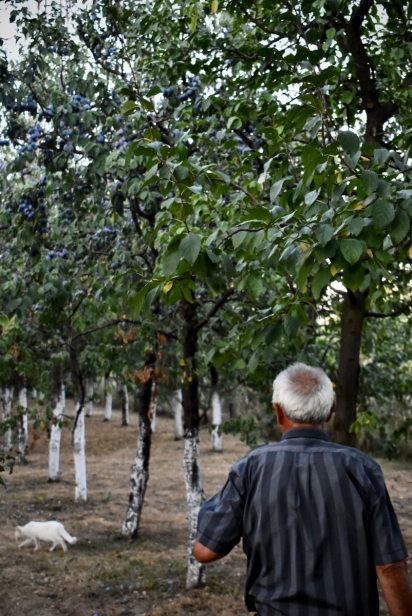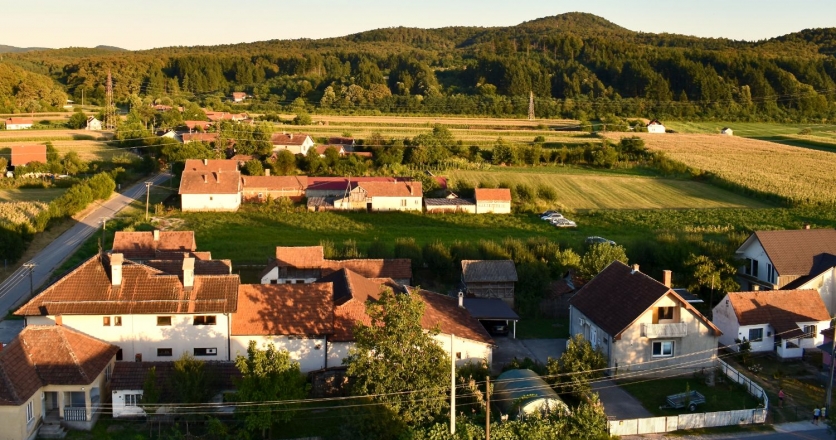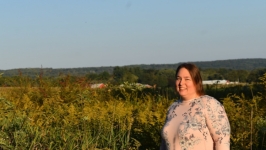Lessons from Afar
Thunder cracks, followed by the rolling patter of rain. Then crickets. We’ve just finished a luscious candlelight dinner of tender chicken, herbed tomato and cucumber salad and sultry soup with homemade pasta—all from ingredients grown within a couple hundred yards of this kitchen.
I’m not at some high-end farm-to-table restaurant. I’m in rural Serbia. The power went out hours ago; no telling when it will return. It happens sometimes, and the women who prepared this meal barely note it. The woodstove couldn’t care less; why should they?
“We need Nikola Tesla,” jokes one of them. That celebrated Serb probably could’ve fixed this in no time. But I get the sense that even if power were out for weeks I’d still be well fed, in this place where the old ways haven’t been forgotten.
For years, I’ve tended to ramble on about sustainable agriculture. In 2015, that habit earned me an invitation to Serbia, to see how the family of a student I’d been teaching maintains the growing, harvesting and preserving practices championed by blogging homesteaders in the States. Online, the ability to ferment your fruits might earn you an affiliate link. In Serbia, it’s just what they do.
Serbia is a landlocked country of about 7 million people in southeastern Europe. Its cities are modern and alluring, scored by storied rivers and rich with history and creative culture.
And the farther you get from Belgrade, the capital city, the more picturesque it becomes. Rustic wagons piled high with watermelons line village main streets, accompanied by peppers, corn and perfectly braided garlic. Houses are stucco with clay tile roofs, bright pots of flowers and yards more likely to grow food than grass. Plum trees are laden with voluptuous fruits that will be distilled into rakija, the high-octane brandy made in many homes, which Serbian author and artist Momo Kapor described as “a mysterious blend of plums and the smell of earth, spite and obstinacy, gentle melancholy, optimism and hope.”
Narrow village roads wind past goats in side yards, people pedaling bikes with bags of peppers, people peddling melons out of Yugo hatchbacks, people selling tomatoes and onions while smoking and reading tabloids, people chasing chickens, children chasing each other.
Scenes like this are not exclusive to Serbia. But the country’s geopolitical position and devotion to heritage has helped to keep food traditions in these rural villages alive.
The morning after that splendid dinner, I spend a bit of time staring off into the horizon, past the stacks of hay to the cornfields and hills beyond. I’m fighting the urge to idealize. This is a hard life. It’s no mystery why so many cultures have moved off the land. Yet I’m fascinated by the innate steadiness of work here. There’s no rushed urgency, no scatterbrained franticness. Every action is infused with care. Work stops for meals, for a quick rest on the picnic bench. And then the evening coffee or juice, where everyone gathers to catch up and make plans if they’re needed. Mostly they’re not, I imagine. Life functions in the rhythm of repetition, and everyone knows their role.
There’s still no power. But breakfast consists of warm, just-baked lepinja, a gorgeously tawny flatbread that is the perfect medium for fresh kajmak. Resembling a cross between feta and cream cheese, kajmak’s intriguing piquancy is like nothing I have ever tasted. It’s as though the land itself has been condensed into this luscious spread. Though I’m loving the eggs fried loosely in animal fat, the sliced tomatoes still warm from the field, I’d be happy with kajmak and a spoon. Preferably a big one.
After breakfast, the grandmother shows me around. Here’s the meat-smoking room, which doubles as an outdoor kitchen when August’s heat presses down. Here’s the cheese-curing room. The canning cellar lined with jars of pickled veggies and bottles of the cherry concentrate that’s mixed with water to make juice.
And here’s the open-air loft where garlic and onions cure, and the grains are dried and ground by hand. The enormous plots of veggies, the orchards and berry patches. The chickens and pigs and cows, fed by what’s grown here.
Despite all that must be worked, beauty remains a priority. The porch is lined with begonias and petunias. Basil, roses, gladiolas, iris and phlox spill across the walkway between the family’s two houses. Pots of geraniums and impatiens line windowsills next to where our tour ends.
The grandmother gestures at our surroundings with a shrug. “We are peasants.”
“To me,” I reply, “you are like royalty.”
A CULTURE OF SUSTAINABILITY
In rural Serbia, it feels absurd to tell people I work to promote sustainable agriculture. Here, that label is redundant. Of course you prioritize keeping the soil vital and lively. How else will future generations feed themselves? Of course your food system is localized. Whom can we count on if not each other?
I don’t want to gloss over the economic hardship endured by many across Serbia and throughout the Balkans. Necessity largely dictates these practices. Incomes can be perilously low. Political instability is a constant drain. And yet, I feel surrounded by generosity and abundance.
“In the village,” summarizes my student’s sister, “you have everything you need.”
Food and I have a troubled past. At times, my days have been defined more by what I’m not eating, or how fixated I am on “eating right” at the expense of pleasure or sanity. In Serbia I vow to accept what I’m given. I eat everything. Never have I enjoyed such sensuous, liberating variety, from grains to meats to dairy to produce.
Habitually, after one breakfast, I get out my supplements, while the sister gathers her things. I ask if she takes vitamins. She looks at me in bewilderment.
“We eat a lot of fruits and vegetables,” she explains.
So do I, I realize. I think of that word: “supplements.” I feel great. What am I supplementing, exactly? Certainly not my bank account.
Back home, I question even more of the assumptions around food I’ve harbored. Which diet will “save the planet.” What “sustainable” even means. And why it feels like so many of the choices encouraged for planetary or personal health are only accessible to those privileged enough to afford them.
BLURRED LINES
Of course, the fact that I could’ve observed many of these practices closer to home is not lost on me. Our region is enriched by Amish and Mennonite families keeping similar customs alive. But the melding of traditional and modern in Serbia is a big part of what intrigues me. The line between rural and urban is blurred. People embrace machines, cars, electricity, running water and the internet, while also maintaining heritage foodways that they rightly recognize as central to their cultural identity.
Last August, I returned to Serbia. I’d learned that Rio Tinto, an Anglo-Australian mining company with a track record of environmental and human rights violations, planned to build a lithium mine in the Jadar River valley of western Serbia. Demand for lithium—a key component in the batteries that power electric vehicles (EVs)—has skyrocketed, as has exploration to identify new sources. Rio Tinto’s proposed mine in Serbia could produce enough lithium to power 1 million EVs, according to several sources. But methods of extraction pose numerous ecological threats, in a country where holding industries accountable for their environmental stewardship has been unreliable, to say the least.
The Jadar River runs alongside this family’s land. While the mine wouldn’t displace them, other families nearby have been pressured to move, thus abandoning this way of life. The corporate message is that the mine will bring much-needed jobs and an economic boon to the region. And if those are the only standards by which you measure wealth, there might be some truth to that.
But the wealth I’ve witnessed can’t be plotted on a graph. Nor can the losses likely to come once this culture—and the land that supports it—is gone.
Last autumn brought unprecedented environmental demonstrations that continue across Serbia. In cities and villages, people have been blocking roads to stop Rio Tinto and demand better environmental standards countrywide. Incredibly, these efforts have paid off: In January, Serbia revoked Rio Tinto’s lithium exploration licenses.
But activists are skeptical. They see this as a temporary political move to gain favor in spring elections. They know they cannot let down their guard; cannot take for granted the richness of this land. That once that is lost, it’s lost forever.
MEANWHILE, CLOSER TO HOME
Among those striving for a sustainable future, there can be a tendency to support green projects unequivocally. Renewable options like electric cars and utility-scale solar feel like no-brainers. But we can’t assume that so-called “green” development will be pursued in a “green” way.
As I learned more about lithium mining in Serbia, I saw parallels with utility-scale solar development closer to home. Both seem necessary. Both feel urgent. But both are also being developed by distant corporations that cannot be trusted to prioritize the local community’s needs. And both are consuming valuable farmable land, at a time when localizing our food sources feels most essential to avoid future supply-chain catastrophes.
In northwest Pennsylvania, farmers and landowners have been approached by an out-of-state corporation looking to develop a utility-scale solar power facility. When one local farmer and member of Erie’s Food Policy Advisory Council (FPAC) raised concerns about the project, which would surround and require easements through her land, she received pushback from local environmentalists who didn’t want questions to be raised, lest they create political doubt.
Meanwhile, her own home benefits from consumer-scale solar power (as does mine), installed by a local company that serves the region. She is keenly aware not only of the need to transition away from fossil fuels, but also of solar’s potential even in an area not known for its sunshine. And done intentionally, large-scale projects can be especially beneficial.
Currently, however, such development often targets communities without relevant zoning ordinances on the books. Communities that are rushed to sign over large tracts of land before questions can be raised. Communities where the payoff from a solar project is superior to any a farmer might expect from growing food.
This farmer’s point was not to hinder the growth of renewable energy, but rather that without citizen pressure, we cannot assume that multinational corporations will approach renewables with anything but the same extractive methods that have characterized the fossil fuel industry. Her point was to ensure that development prioritizes preserving farmable land and biodiversity. That if these are lost, they’re lost forever.
EMBRACING COMPLEXITY
In contemplating climate change, Serbia has reminded me to be skeptical about solutions that sound simple. The Serbs I know embrace complexity. Conversation is spirited, laughter is boisterous and argument is welcomed.
Those of us watching the news in the 1990s heard plenty about “the Serbs.” And the complicated history that fomented bloody chaos in the Balkans a few decades ago remains unsettled. On a trip to Bosnia in November, my husband and I sensed the tension—the fear that history could repeat itself, especially now.
If you rely only on the news, you perceive this region as scary and tumultuous, populated by territorial radicals who will stop at nothing to gain control. A closer look reveals a much broader and richer perspective.
And so I learn perhaps the most important lesson from my travels: the danger of a single story, as Nigerian writer Chimamanda Ngozi Adichie puts it. That “the problem with stereotypes is not that they are untrue, but that they are incomplete.”


